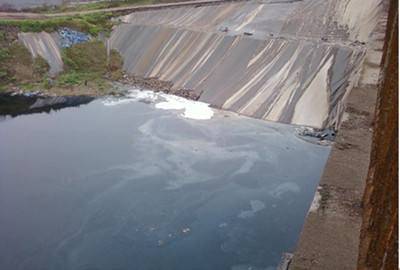At present, there are two current situations of filtrate treatment in China:
1. Serious shortage of investment funds
At present, the total investment in the leachate treatment system of more than 70 waste treatment plants is about 400-500 million yuan, which can not be compared with the investment in urban sewage treatment of hundreds of billion yuan every year in China. Due to the withdrawal of pepper noodle investment, some systems can barely run up to the standard, some can not even run and then abandon. In recent years, although some new processes have begun to enter the market, most of them are exploratory tests, which have not yet withstood the test of actual project operation, mainly manifested in unstable treatment effect and low rate of reaching the standard.
2. Treatment technology to be improved
At present, there are three kinds of leachate treatment technologies in China: one is to use the traditional domestic sewage treatment technology, mainly simple biochemistry, which is basically not up to the standard. This kind of project accounts for more than 60% of the total leachate project. Second, in recent years, considering the characteristics of landfill leachate, many scientific research institutes have continuously explored some new technologies, improved some old methods, integrated some new processes, and applied them to practical projects, but the effect is not ideal. Such projects account for about 10%. Third, some landfills suffer from the lack of good treatment technology and are simply dealt with. Such projects account for more than 20%.
In the 1950s, the western developed countries paid attention to and carried out large-scale leachate treatment, which was basically explored in frustration and failure. Until the 1980s, with the application of membrane treatment technology in leachate treatment, they came out of the technical route of mainly reverse osmosis technology, high-efficiency bioreactor combined with reverse osmosis. From the development of leachate treatment technology in foreign countries in recent ten years, the technology of simple biochemical treatment of leachate has been gradually eliminated, replaced by the membrane treatment technology mainly based on reverse osmosis and the advanced technology of high-efficiency biochemical treatment combined with membrane method. Since 2003, with the increase of environmental protection, garbage and leachate treatment, the project of introducing advanced reverse osmosis technology from foreign countries has been completed successively, which has raised the level of leachate treatment in China to a higher level and ushered in a new era of leachate treatment
Due to its unique open channel, short process and turbulent technology, the equipment has strong adaptability to leachate, its treatment efficiency does not change with the change of leachate quality, and the effluent quality is stable. The superior effluent quality has proved that the dish tube reverse osmosis is highly adaptable to the complex water quality with high concentration and great change of leachate.


